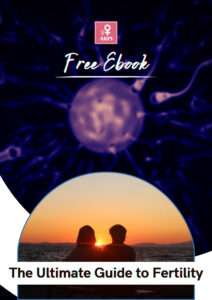The test tube baby process is certainly a ray of hope for childless couples. Where in conservative societies, being childless is considered a curse, the test tube baby procedure has proved a boon to many couples. As an assisted reproductive treatment, it helps couples burdened with a life of social stigma rising from being unable to conceive, this treatment can bring happiness in their lives from the joy of parenthood.
Why Are Some Women Unable To Conceive
Did you know? 1 in 7 couples do not conceive within a year of trying. And more than half would conceive over the next year!
Infertility is the root cause of some women being unable to conceive. And there could be many reasons leading to infertility in a person, it could be male infertility or female infertility. With growing urbanisation of families, the top risk factors that affect fertility of a man or a woman is alcohol and drug abuse, toxic work environments, smoking, age related issues, health problems, side effects of medicines, chemotherapy and radiation. These causes may lead to inadequate levels of hormones and that in turn may lead to infertility.
Difference Between Test Tube Baby and IVF?
Test tube baby process is also known as IVF treatment. It is a layman’s term that used to be used There is no difference between IVF and test tube baby. The term test tube baby is a non-medical term that got popularity during the infancy of IVF treatment, arising from the concept of the embryo forming in a test tube instead of the woman’s fallopian tube.
A colloquial term for babies conceived as the result of IVF, “test tube babies”, refers to the tube-shaped containers of glass or plastic resin, called test tubes, that are commonly used in chemistry labs and biology labs – Test Tube Baby Wikipedia
The Test Tube Baby Process Step By Step
Before we proceed to the test tube baby procedure, let us know more about,
Infertility Tests – How Doctors Diagnose:
- Semen analysis (sperm tests)
- Blood tests for the lady to check her hormones
- Ultrasound of the lady.
Various treatments or options for this situation
- Medication to improve fertility
- Surgical interventions to tackle:
- fallopian tube problems
- endometriosis
- pcod
- uterine adhesions
- tumours
- Assisted conception treatments like:
When Is Test Tube Baby Process Recommended For Women?
IVF or test tube baby treatment is recommended for the female partner when;
- She is suffering from unproductive or damaged fallopian tubes
- Her partner has minor problems with his sperm
- The couple have taken prescriptions for fertility drugs or have undergone other fertility treatments such as IUI but without success.
- They have been trying to conceive for
- 24 months or more if they are less than 40 years of age, or
- less than 24 months but are aged 40 years or more.
- In both cases when the cause of their not becoming pregnant has not been identified.
Did you know? From 1978, since the first case of IVF, there have been thousands of IVF baby births. And that nearly 2% of the babies born in the United Kingdom were conceived as a result of IVF treatment.
With this basic backdrop, let’s proceed to the brief 5 steps of the test tube baby procedure:

1st step:
A drug is given to female partner for about two weeks which suppresses the natural menstrual cycle process.
2nd step:
Fertility drugs which contain the fertility hormone FSH (follicle stimulating hormone) are given to the female partner to increase the numbers of eggs in ovaries, than the normal egg formation process. After this vaginal ultrasound scan is done to monitor the progress of eggs in ovaries.
3rd step:
The eggs thus produced in the ovaries are retrieved with the help of a very thin needle; that is inserted into an ovary through the vagina. A suction device is connected to this needle which sucks out the eggs.
4th step:
Then these eggs are kept in a chamber which is placed in an controlled environment with male sperms. After some hours, the sperm enters the egg. The sperm used here might be frozen or fresh ones.
5th step:
When the egg gets fertilized, it divides and becomes an embryo. Then this embryo is placed in the womb of the female partner who is undergoing treatment. Sometimes more than one embryo is placed.
Is Test Tube Baby Procedure Painful?
It is important for every couple going for test tube baby process of IVF, to understand that just like any pregnancy case, this treatment has its own challenges. As in a normal pregnancy, the female partner would be experience mood swings, cravings and other hormone related changes. However, in case of an IVF treatment, there are additional fertility drugs and medications given to the patient and that may increase the intensity of above challenges.
And if you are concerned about test tube baby procedure pain, it is important to discuss this with a skilled and experience Fertility Specialist. However, from general survey of couples who have undergone the test tube baby process, one can say that the physical pains are minimal. Like,
- Taking injectable medications
- Bloating of ovaries when eggs start to develop
- During retrieval of eggs from the ovaries where patient is under sedation
- Transfer back of the embryos into the uterus that’s as uncomfortable as a pap smear
- And nine months later, the pain related to childbirth and the postpartum period
But the joy of motherhood overshadows all such pains, doesn’t it?

